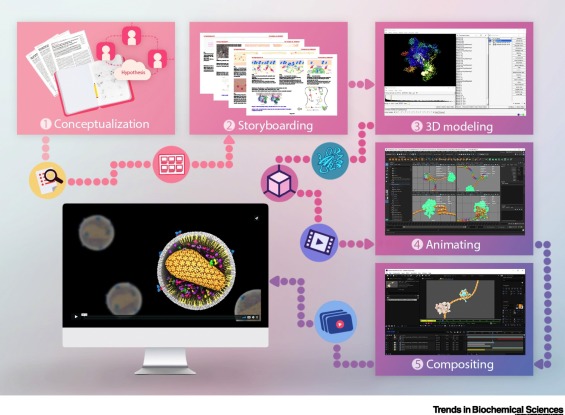Takeaway:
The power of 3D animation is its ability to integrate and communicate diverse information within a realistic, intuitive, and engaging visualization, thus allowing researchers to build, explore, and communicate their hypotheses. Some of the advantages include it allows visualization of ideas, hypotheses, processes, and research in an effective and compelling way. It consolidates a variety of data, especially spatial, dynamic, stoichiometric, and temporal, and can convey a broad range of information ranging from a whole organism to a single atom. Some of the challenges are that learning relevant software and principles of design and cinematography demand considerable time and effort, and creating a complex animation can take weeks to months. Also, scientific accuracy, in terms of scale, time, and detail, needs to be compromised in certain cases so that the animation is clear and comprehensible.

Reference:
Nayak, S. (2020, July 1). Using 3D Animation to Visualize Hypotheses. Trends in Biochemical Sciences. https://www.cell.com/trends/biochemical-sciences/fulltext/S0968-0004(20)30117-1



